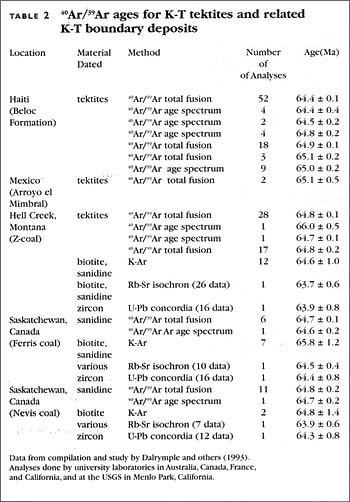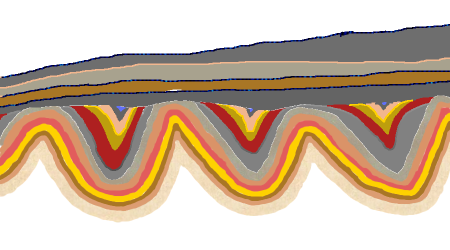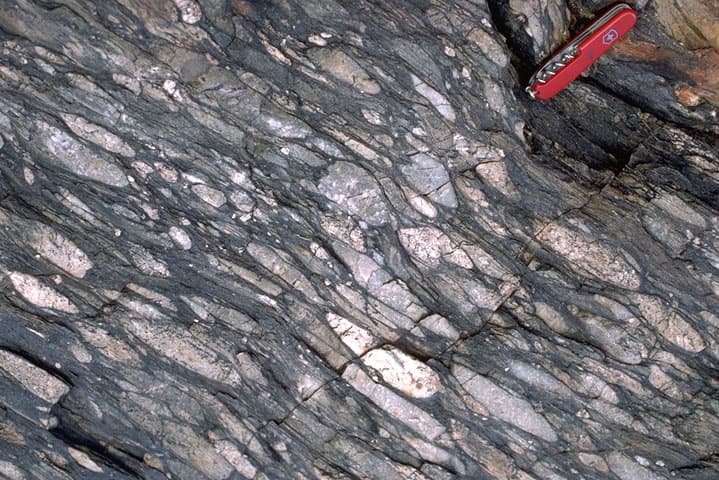Counting tree rings is easy. Children grasp the concept right away; this they can do. No degree from MIT required. You do not need algebra, let alone calculus, let alone differential equations. …Seven, eight, nine…just keep going. But somehow, this is not easy enough for young earth creationists, who get all confused when the count goes over 6,000. Being as the concept is so simple and accessible, defenders of a young earth must say something…anything…but what?
But indeed there is also much more to it, and scientists are far from just interested in the counting. By analyzing the isotopes incorporated into the wood as the tree grew, both radiometric and stable, by measuring the springwood and summerwood, looking for signatures of drought, rain, early frost, insect and fungal infestations, much can be determined of the climate and seasonal variation, as well as volcanic and solar activity. So dendrochronologists not only know how long the tree ring record extends, but much of what was going on at the time. For the past 14,000 years, notably absent was a global flood.
Yes, I am well aware of the nonsense put out by your favorite YEC evidence deflectors concerning dendrochronology. Long lived bristlecones are a challenge for the YEC timetable, being as ages to over 5,000 years have been recorded. But that is not the extent of problem, not by a long shot. There are dozens of ring chronologies all over the world from Germany to New Zealand, which reach far past 4500 years.
But that is not the extent of the problem for YEC. The tree ring chronology has been subject to massive C14 cross checking. In 1980 the first of these systematic operations was completed, then there was Intcal98, Intcal04, Intcal09, Intcal13, and Intcal20.
So here it is. The most recent tree ring - carbon 14 cross date goes back 13,900 years. Let there be no category error here; this is prior to any interpretation. This is fact. This is straight up data.
Let us consider the German Oak chronology against the YEC timeline. Assume Noah’s flood, say 2500 BC, putting aside actual Egyptian history for the moment. Water and dead stuff everywhere. But we cannot start growing forests in northern Europe right away, can we? There is the matter of all the ice ages wrapped up in one to contend with. It starts to snow, because the seas, which are warm from all that tectonic zipping about, are sending moisture to the cool air, which for some strange reason stays cool even though it blankets a warm ocean; but assuming this all makes sense in somebody’s head, the snow does not let up and after a few centuries all of Europe is under kilometers of solid ice. The sky eventually clears up. Then we wait for a brief few centuries, unrealistically short, for the glaciers to melt to the ground, so lets say 4000 years ago minimum we get our first German Oak seedlings. Given that we have 4000 years for about 14,000 rings, that works out to more than three rings per year. However, because rings are identifiable in confidently dated historical artifacts, we know that the single ring per year works well at least for the past millennium, so that actually leaves 3000 years for about 13,000 rings, which that means there would have to had been four rings per year to accommodate Noah’s flood. If that works for you, then I’m happy for you.
About those purported extra rings. They are rare. They are freaks. When they happen, they are typically distinguished and readily identified, as they do not have the characteristics of true annual rings. YEC has seized on this as a get out of jail free card, but have never offered evidence of systemic over count due to false rings. They claim that “conditions”, without specifying what conditions, caused massive extra rings, but even in their own fictitious world, forests must have grown long after the flood and after the subsequent ice age. So the rings look exactly as they would with the typical variability as are familiar with trees growing now. Furthermore, the more common ring irregularity is to miss a summer growth period altogether due to drought and cold weather. That could only mean that the tree record is even older, so ring irregularities are an argument against YEC.
You cannot discuss tree rings without dealing with carbon dating, because tree rings are made of carbon. Even if you fabricate some storyline of why physics does not apply to carbon dating, or why the timber which frames your house are full of bogus annual rings, there then remains the additional problem, why does carbon dating align with the same results of dendrochonology, whether that is 200 years, 2,000 years, or 12,000 years?
The YEC argument against tree rings bears a mark of desperation. Dendrochronology is science, but also the stuff of common life. It is such a simple and accessible counter to YEC. You see them in every cut end of a 2x4. You see trees grow every spring. I wonder that YEC adherents would rather deny their personal direct experience, in order to cling to some concocted nonsense to salvage a scheme at odds with reality. That is what they call a creationist lens.


